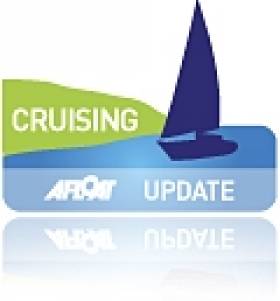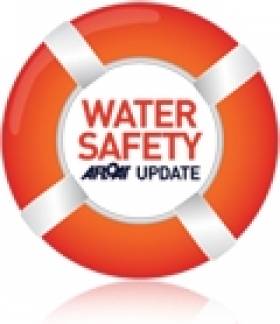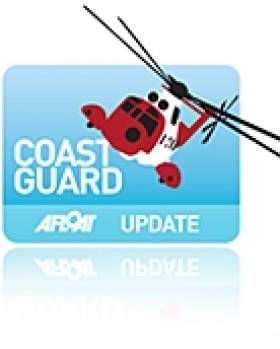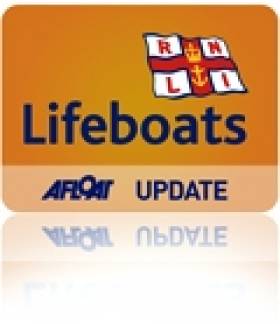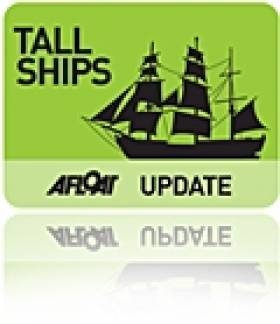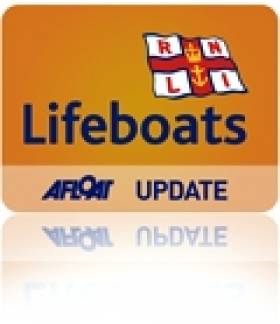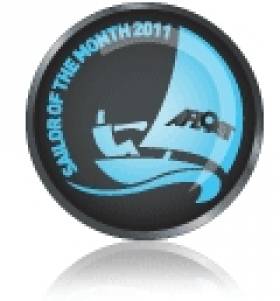Displaying items by tag: capsize
#TitBonhomme - The inquest into the Tit Bonhomme tragedy has heard testimony from the sole survivor of the incident that took the lives of five fishermen.
As The Irish Times reports, Abdelbaky Mohamed explained how he and three other crew had been asleep below deck their trawler hit Adam Island at the mouth of Glandore Harbour on the morning of 15 January 2012.
Mohamed said there was no 'big bang' when the vessel hit the rocks but it began taking on water very quickly has he, his brother Wael, Attia Shaban and Kevin Kershaw made their way to the bridge to join Saied Ali Eldin and skipper Michael Hayes.
The boat was rolling in heavy seas as Hayes handed out lifejackets to each crewmen which they then put on, he recalled, adding that conditions made it impossible for them to put on their immersion suits.
The Irish Independent has published a harrowing transcript of the crew's frantic calls to the emergency services as the Tit Bonhomme was assaulted by the waves and eventually capsized.
Mohamed said his lifejacket was ripped from his body by the force of the water crashing into the bridge, but he was able to grab onto it to reach the surface and swim towards the shore, where he was found by a search party two hours later.
Last month's report by the Marine Casualty Investigation Board (MCIB) found that crew fatigue was "the single overriding casual factor" that contributed to the tragedy, pointing out that the crew had less than five hours' sleep during their 40-hour fishing trip.
But Mohamed told the inquest that he had had sufficient rest at the time of the incident.
The Irish Times has more on the story HERE as the inquest continues.
Shipwreck Highlights Danger of Portugal's Winter Winds
#Shipwreck - Two are reported dead after a shipwreck yesterday (Wednesday 10 April) on the Portuguese coast in what is a reminder to all cruisers of the dangers of strong winds in the region.
According to Portuguese language newspaper Publico, the deceased include one of the five crew of the German-flagged cruiser Meri Tuuli, and a member of the Portuguese maritime police attending to the incident who went into the water when his RIB overturned.
Eight people in total were admitted to hospital after the incident in which the Meri Tuuli - an X-442 yacht perated by a local sailing school - capsized on Cabedelo beach in Figueira da Foz, near Oporto.
Two are reported to be "wounded with traumatic injuries" while another two showed symptoms of hypothermia after exposure to the water.
Figueira da Foz is a popular cruising destination along the Iberian coast, but its port is vulnerable to the high swells that attract surfers to the area, sometimes closing altogether.
A source close to Afloat.ie described most harbour entrances along Portugal's west coast as "lethal during of after strong winter south or southwest winds" which are made stronger as air rushes into the valleys at river mouths as sea breezes.
Tourist Dies in Cape Town Charter Boat Capsize
#WATER SAFETY - Irish tourists headed to South Africa have been reminded of the dangers of the sea after a whale-watching vessel capsized near Cape Town at the weekend.
As BBC News reports, British tourist Peter Hyett and crewman John Roberts died when the catamaran Miroshga capsized off Hout Bay on the eastern side of the Cape Peninsula, near the popular seal colony of Duiker Island.
A number of the 39 passengers on board at the time were trapped in the vessel for almost four hours before they were freed by rescuers.
The seas off Hout Bay are a mecca for whale and seal watching, but are known to be rough, with hidden rocks below the surface. Great white sharks are also a regular sight in the waters, attracted by the seals.
But fellow skippers in the area reported fine weather and only slight swells at the time of the capsizing, according to iAfrica.com.
An investigation into the incident is being launched.
Sailor Trapped Under Dinghy
#coastguard – A man was taken to hospital this evening after he was rescued from beneath his capsized dinghy, off Dale in Pembrokeshire.
Milford Haven Coastguard responded to an emergency 'Mayday' call at 6:54pm. It was reported that the laser had capsized with two crew aboard, one of which was trapped underneath the hull of the dinghy. A Rescue helicopter from RAF Chivenor was scrambled and the RNLI all weather and inshore lifeboat from Angle were requested to launch. Coastguard Rescue officers from Dale were sent to the scene and the Welsh Ambulance Service was in attendance.
Irish Couple Among the Rescued from Capsized Cruise Ship in Italy
#NEWS UPDATE - An Irish couple were among those rescued from the cruise ship that ran aground off the coast of Italy on Friday night, the Irish Examiner reports.
Three people are believed to have died, while 14 others were injured, after the Costa Concordia struck a sandbank and capsized off the Tuscan coastline in the Tyrrhenian Sea.
The vessel was carrying more than 4,000 passengers at the time, many of whom jumped into the water as panic set in after the ship hit a rock that tore a 150ft gash in the hull.
As of Saturday three bodies had been recovered from the sea, with at least three more feared drowned.
The Department of Foreign Affairs confirmed that an Irish couple on board are safe and well, and are receiving consular assistance. Many survivors are taking refuge on the small island of Giglio close to the incident.
The Irish Examiner has more on the story HERE.
Portrush Lifeboats Rescue Four from Capsized RIB
Both Portrush Lifeboats were in action on Saturday afternoon (15th October) to rescue four people in an overturned boat at the Barmouth at Portstewart.
Both boats were launched at 15.50 hours on a wet dark afternoon after reports had been received of an overturned rib. When the Inshore boat arrived on scene there was a heavy 2 metre swell. Three people were on top of the rib and one in the water.
The volunteer ILB crew got the person in the water into the lifeboat by which time the All-weather lifeboat was on scene. All persons were then transferred to the ALB and taken to Portrush.
All were wearing wetsuits and did not require medical attention.
Robin Cardwell LOM stated
'This was a perfect example of team work between the two crews of the lifeboats from Portrush There was no hesitation in the volunteer crews responding to this shout. Each man knew what he had to do to bring the four people and their rib ashore'.
More from UK coastguard source here:
Belfast Coastguard received a '999' call from a member of the public at 3:48 pm informing them that they had witnessed a small boat capsize and there were people in the water. Coastguard Rescue Officers from Coleraine were sent to the scene. The Portrush inshore and all weather RNLI lifeboats were requested to launch and the Irish Coastguard rescue helicopter from Sligo was scrambled.
Steve Carson, Watch Manager, Belfast Coastguard, says:
"The inshore lifeboat was first on scene and discovered one person in the water and a further five people on the upturned hull of a Rigid Hull Inflatable Boat (RHIB). The conditions on scene were challenging with a large sea swell.
All six people have now been transferred to the all weather lifeboat and taken to Portrush Harbour and do not require further medical assistance.
The RHIB is being towed to harbour by the lifeboat.
We would like to remind the public that if they witness an incident along the shoreline or on the coast to ring '999' and ask for the Coastguard. Swift action from the member of the public this afternoon greatly assisted in the rescue of the six people in the water."
Rambler Alert - TV Programme Recalls Dramatic Rescue
The programme includes first-hand accounts of how the yacht inverted in seconds when her keel fell off: the skill of the Baltimore lifeboat crew in recovering sixteen crew members from the upturned hull: the race against time to find the remaining five crew members: their mental and physical struggle to survive almost three hours in the water: and how computer technology led to their rescue as darkness closed in.
'I was cold, so cold...' Wendy Touton talks publicly for the first time about her Fastnet ordeal in tonight's RTE documentary
It features exclusive interviews with Rambler's owner, George David and with his partner Wendy Touton, who was airlifted to hospital in a critical condition after being rescued.
Viewers will also see, for the first time, dramatic video from the rescue helicopter, as well as footage of the race as it rounded the Fastnet Rock and gripping images of the rescued crew being hauled from the water
Safety of World's Tall Ships In Question
Safety on the world's 700 sail training tall ships has been called into doubt, Sail World reports.
The concern comes following an investigation into the sinking of Canadian tall ship Concordia off the coast of Brazil last year.
The ship capsized in a squall on 17 February 2010. All 64 passengers and crew spent two days adrift in lifeboats before being rescued.
Investigators from the Transportation Safety Board of Canada concluded last week that no action was taken to prevent capsizing, such as reducing sail or changing course, because the officer-in-charge did not realise the ship was in danger.
The board also learned that the officer-in-charge was able to get his certification without having to familiarise himself with information on the handling and stability of the ship, and found that this lack of a requirement is universal across the world's sail training vessels.
Senior investigator Paulo Ekkebus said this was "a large concern" and called for stricter standards worldwide.
He added: "We’ve not been able to find any country, any flag-state, requiring the study, or for people that they are familiar with this type of information, if it is provided on board the ship."
Sail World has much more on the story HERE.
Lough Derg Lifeboat Rescues Three after Yacht Capsizes
At 17.04hrs Saturday September 10, Lough Derg RNLI Lifeboat was requested to launch by Valentia Coast Guard following a report of two persons in the water off Hare Island, on Lough Derg. At 17.15hrs, the lifeboat was launched with Helm Colin knight, Johnny Hoare and Ger Egan on board, and was on scene 17.20hrs. The wind was southwest, force 6, with a 5ft to 6ft swell, visibility was good.
When the RNL lifeboat arrived on scene, a passing yacht was recovering two persons onto their yacht, but had lost a visual on the third person. The lifeboat immediately carried out a search pattern, located the third casualty some four or five hundred metres away, and recovered them to the lifeboat.
Lifeboat Helm Colin Knight said "these three people were very very lucky; the passing yacht only became aware of their plight when, on tacking, one of sailors heard calls for help on the wind and raised the alarm". He continued, "the persons were in the water for at least thirty minutes, in fairly hostile conditions, when the only boat in the vicinity heard their calls for help, someone was looking after them today".
Tasked by Valentia Coast Guard, the Irish Coast Guard Search & Rescue Helicopter team, Rescue 115, took off from their base at Shannon at 17.34hrs. Killaloe Coast Guard had also launched to assist. After establishing that the RNLI lifeboat could be at their station within 5 minutes, Rescue 115 requested the crew to take the casualties to Dromineer from where they5 would transfer the casualties to hospital.
The RNLI lifeboat returned to the yacht, and took a second casualty on board. Killaloe Coast Guard boat took the third person. All were then rushed back to Drominneer where they were met by the helicopter and transferred to Limerick Regional hospital for further treatment.
The lifeboat then returned to 'The Hare' to see if the sunken vessel was a navigational hazard, but there was no sign of wreckage or of the yacht. The lifeboat returned to station and was ready for service again at 18.50hrs.
Kieran Cotter and Jerry Smith Named Sailors of the Month for August
When Rambler's canting keel snapped off on the evening of Monday August 15th shortly after this mega-machine had rounded the Rock, she was powering at full speed towards the turning buoy, crashing into the lumpy seas which often arise where the steep land juts into the open ocean.

Kieran Cotter and the crew of the Baltimore lifeboat at the capize site. Photo: Thierry Martinez
The catastrophe was total and very sudden. The giant racer completely inverted every bit as quickly as the smallest of racing dinghies. The changeover, from being a highly tuned performer on track for success, into the inverted hell of exploding water, strangling ropes and jagged breaking gear, was at the least totally disorienting, and could have caused panic in less seasoned sailors.
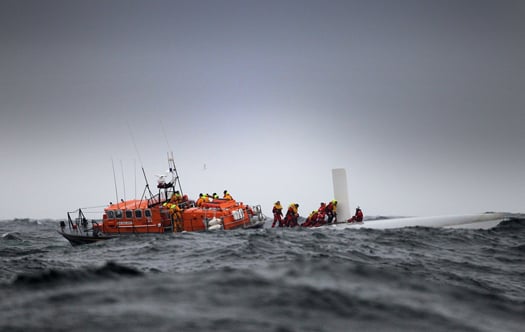
The Lifeboat rescue from the upturned hull. Photo: Team Phaedo
Despite the difficulty of clambering onto the ultra-smooth underside of the huge hull, fifteen of the crew managed to get themselves up to the minimal handhold of the dagger board. But five of those who had been below – some of them off watch asleep – had drifted away from the boat after the monumental struggle of escaping from a small world turned upside down.
The five in the water roped themselves together, but things had taken an ominous turn, as the mist in which the big boat had rounded the Fastnet had now thickened into fog. For a crucial period, visibility was virtually nonexistent as other boat raced past nearby at high speed. And although some emergency radio beacons had automatically activated, the picture was confused with night drawing on.

Drifting crew are rescued. Photo: Team Phaedo
Time was of the essence – even in summer these waters can quickly induce hypothermia. Several agencies were now involved in the rescue, and skilled use of technology narrowed the search area, though in the sea conditions the stricken boat and crew were frequently invisible.
It was the Baltimore lifeboat with Kieran Cotter in command which was first on the scene. Taking off the crew was a challenge, but all fifteen on the upturned Rambler were safely rescued, though an impact between lifeboat and white hull resulted in a streak of lifeboat blue on the yacht which was to be immortalised as "Kieran's kiss".
But that was later, not until after a needle-in-a-haystack search found the other five adrift together in the water, with one already on the edge of coma. They were found by the lifeboat deputy mechanic Jerry Smith, on patrol with a Fastnet Race film crew in his dive boat Wave Chieftain. It was a miracle.
Next morning safely in Baltimore, the weather was already well improved. The previous night's conditions seemed like a nightmare. In calm summery conditions two days later, the Rambler hull was righted off Barley Cove and towed to Baltimore. She'll be restored to full racing trim by Cookson's in New Zealand, presumably with modifications to the design and specification for the canting keel. But that's another day's work. Today, we celebrate the achievement of Kieran Cotter and Jerry Smith, whose seamanship provided the successful focus for a network of rapid work by skilled technologists ashore.
Coverage of the rescue appears in Afloat's Rolex Fastnet Race page



























